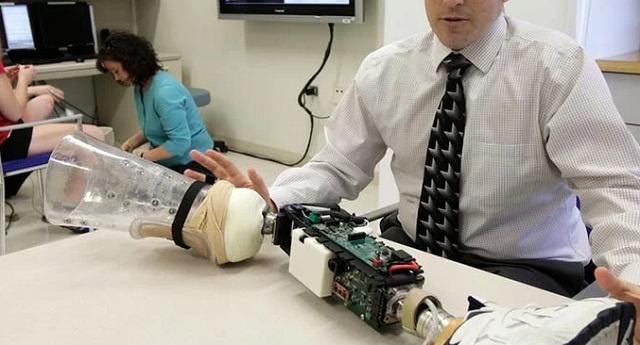
However, recording signals in a nerve isn’t easy. The vagus nerve contains tens of thousands of neurons and each electrical signal is incredibly weak and hard to detect. Coupled with this is the fact that interfering signals from muscles are often 100 times larger than the signals within the nerves.
In order to detect an impending seizure, for example, an implanted device must be able to record and identify one small signal from another at the same time. This is not unlike being at a rock concert and trying to listen to a conversation on the other side of the stadium.
Bioelectronic medicine is becoming a reality
Despite these challenges, the continuing work of scientists, physicians and engineers is starting to make the dream of bioelectronic medicine a reality. Advances in electrode technology, signal processing and implant design have all played a key role. New recordings made from the vagus nerve have decoded information about breathing that might be vital in the design of devices that treat respiratory disorders.
More than two centuries after Luigi Galvani made his frogs dance, the true possibilities of neural interfaces are finally coming to fruition. And the vagus nerves are not the only targets. Research in England is aiming to restore bladder control to patients with spinal cord injury by recording signals from the sacral nerves, and worldwide there is a renewed effort to create prosthetic limbs that are controlled directly by the patient’s thoughts.
Electricity may not replace conventional drugs, but in the not too distant future, it will surely complement them.
****
SOURCE: upliftconnect.com by Benjamin W Metcalfe
 The Independent Uganda: You get the Truth we Pay the Price
The Independent Uganda: You get the Truth we Pay the Price


